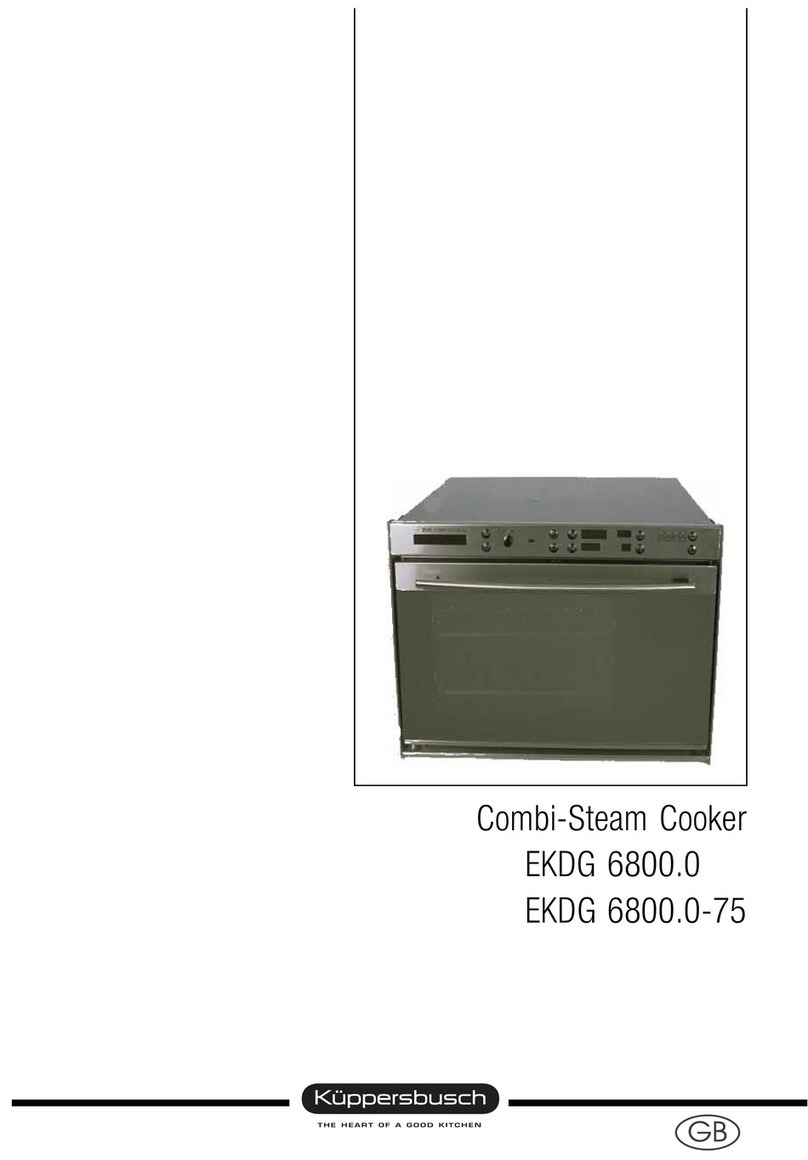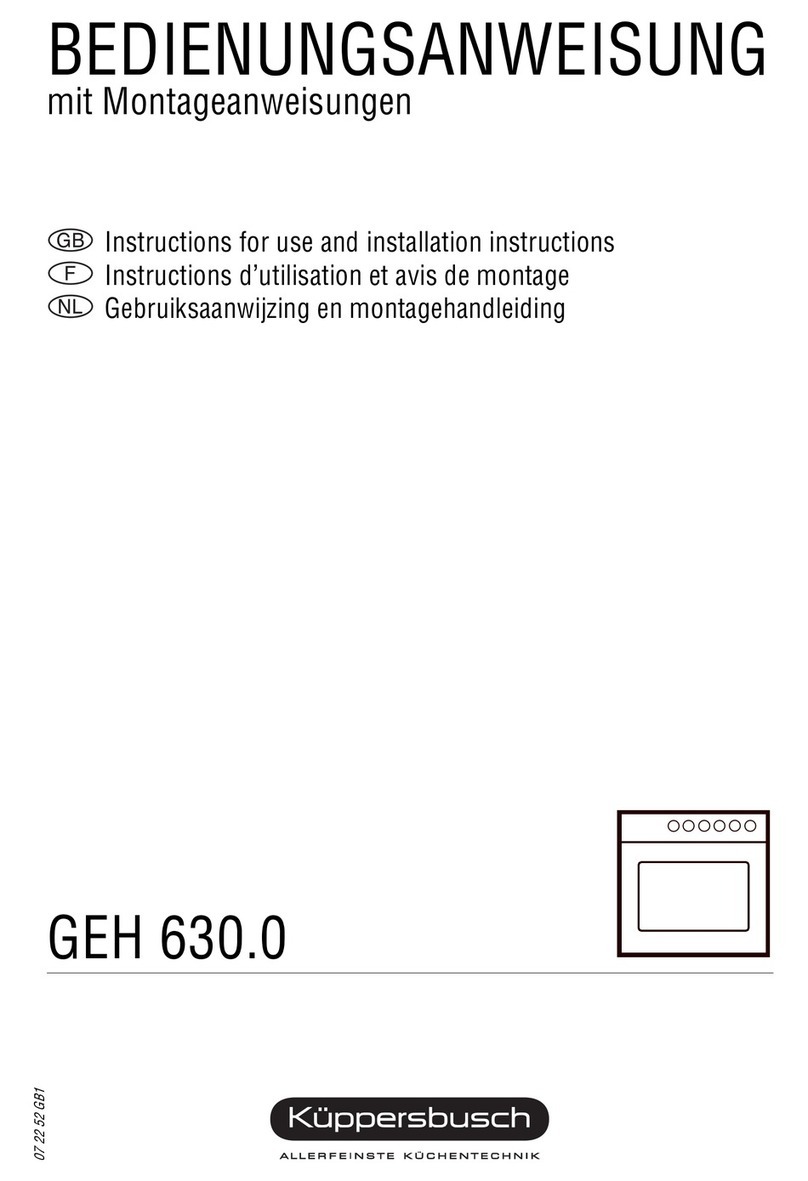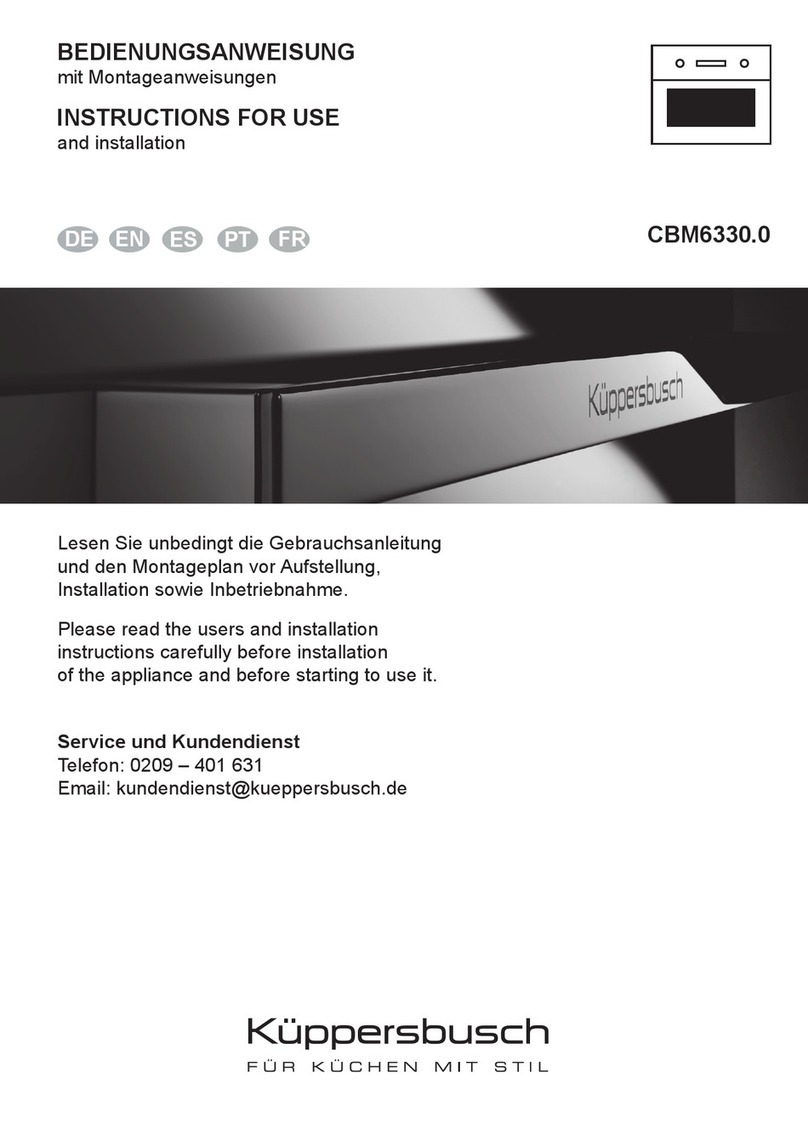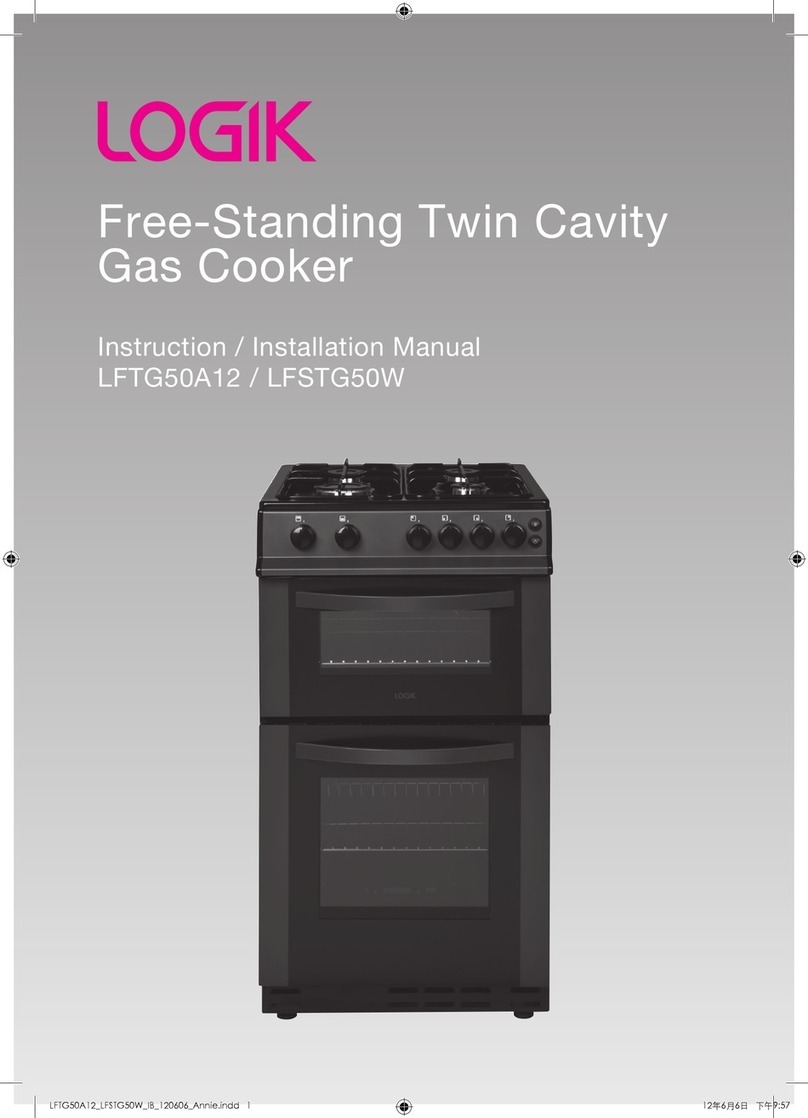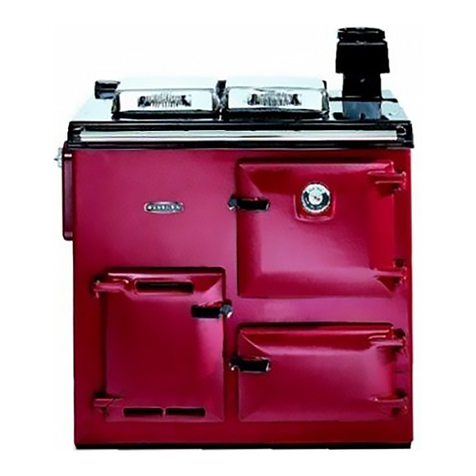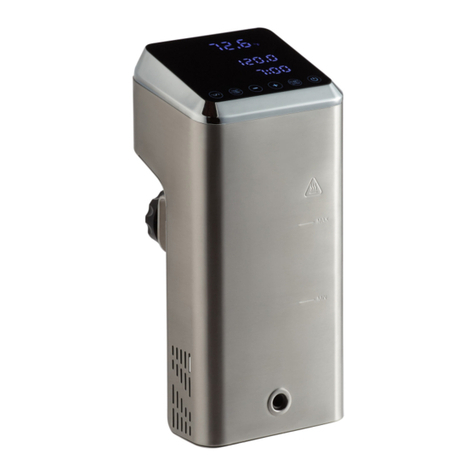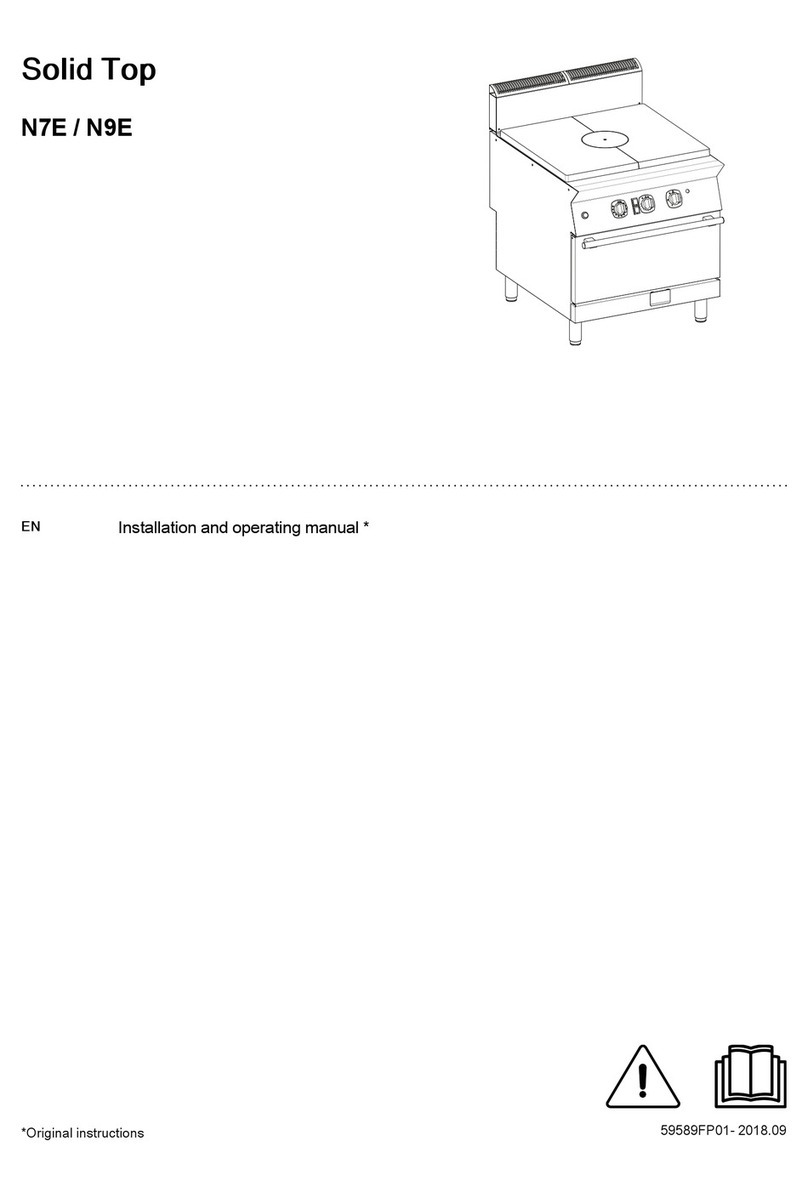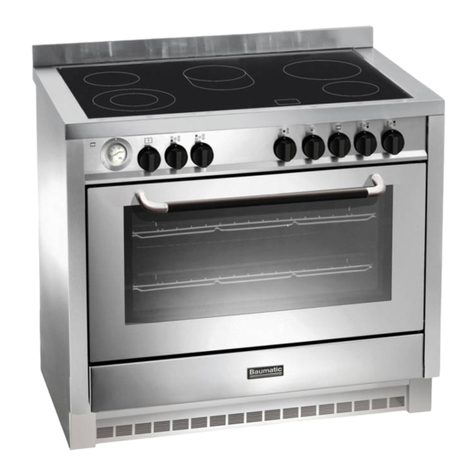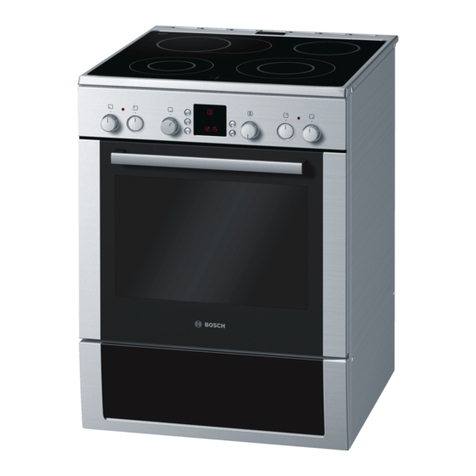24 EEH 6375.0
backmobil®(acc. No. 600)
The backmobil®replaces the shelf
racks in your oven and can be
completely pulled out like a trolley.
It can be removed from the oven
and dismantled for cleaning
purposes.
If your oven is equipped with a
backmobil®, please read the
instructions enclosed with it.
Telescopic glide-out shelves (acc. No. 601)
are oven rails available as
accessories which replace the
side racks and make working in a
hot oven more easy. Trays or
gridirons are placed on the glide-
out shelves. They can be pulled
out singly and independently of
each other.
If your oven is fitted with glide-out
shelves, please read the
instructions enclosed with them.
Fast preheating
FDo not insert food for roasting or baking into the oven until fast preheating
is over and the oven has been set to the normal mode of operation.
FWith the Pizza mode the empty oven can be preheated in a relatively
short time.
– Close the oven door.
– Set the oven selector switch to Pizza mode .
– Set the temperature you want. The heating-up indicator comes on.
– As soon as the heating-up indicator goes off, set the mode you want.
– Put the food into the oven.
Roasting
FUse the drip pan and the gridiron.
FYou can roast very accurately using the roasting thermometer. Please
read the notes on p. 27.
■ You should only cook meat or fish in the oven if they weigh more than 1 kg.
■ The roasting time depends on the type of meat you are roasting, the quality
and on the thickness of the joint.
To measure the joint, lift it slightly as it collapses under its own weight.
■ The roasting time for meat with a layer of fat can be as much as twice as long
as usual.
■ If you are cooking several small pieces of meat or small poultry in the oven, the
cooking time increases by about 10 min. per piece. The roasting time for a
chicken is, for example, about 60 min., for 2 chickens 65 to 75 minutes.
FBe absolutely certain to observe the notes on the rack levels!
Rack levels (count from bottom!):
Roasting on the gridiron
■ You can cook large roasts directly in the drip pan or on the gridiron with
the drip pan inserted underneath (e.g. turkey, goose, 3-4 chickens or
knuckles).
■ Turn the roast after 2/3 of the cooking time unless you are using the hot
air convection mode # .
Roasting in a pan (oven)
FSelect Intensive hot air convection 0at 180-200 °C.
■ You should roast lean types of meat in the roasting pan with the lid closed
(e.g. roast of veal or marinated beef, braised beef or deep-frozen meat).
The meat remains juicier that way.
■ You can use any type of pan (stainless steel, enamelled, cast iron or glass)
which does not have plastic or wooden handles.
■ If you use an earthenware cooking pot, study the manufacturer's
instructions.
We recommend the following procedure:
– Rinse out the pan with water or grease it lightly.
– After preparing the meat (adding spices), place it into the pan. Put the lid
on the pan and place the pan onto the rack in the cold oven.
– Select Intensive hot air convection 0and set the temperature to between
180 and 200 °C.
Prepare the sauces in the usual way.
Recommended temperatures Roasting
The recommended temperatures for the preferred operating modes have
been highlighted.
Intensive hot air convection 0 Drip pan: rack level 0, Gridiron: rack level 1
Hot air convection #Drip pan: rack level 1, Gridiron: rack level 2
Top heat/bottom heat $Drip pan: rack level 1, Gridiron: rack level 2
Type of meat Hot air
convection
#
Top heat/
bottom heat
$
Intensive hot
air convection
0
Roasting time
Temperature in °C per cm of the
thickness of the
joint in mins.
Joint of beef 160 170-190 18
Roast beef 180 200-220 180-200 8-10
Fillet 180 200-220 180-200 8
Veal 160 170-190 160-180 12
Roast pork 160 170-190 160-180 12-15
Smoked loin of pork 160 170-190 160-180 8
Shoulder of pork 160 170-190 160-180 12-15
Roast pork with
crackling
160 170-190 160-180 12-15
Game 160 170-190 15
Wild boar 160 170-190 15
Fillet of game 180 200-220 180-200 8-10
Mutton 150-160 170-190 15
Duck 160 170-190 160-180 12
Goose 160 170-190 160-180 12
Chicken 160 180-200 160-180 8*
Turkey 160 200-220 160-180 12
Fish 160 200-220 8
*whole chicken 45 - 60 min.



